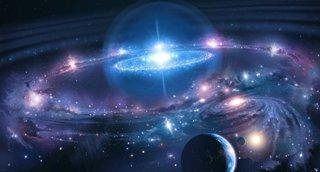
WASHINGTON (PTI): In a breakthrough, astronomers have found the first direct evidence of Big Bang by imaging the gravitational waves produced almost 14 billion years ago when the entire universe sprung into existence.
The universe we inhabit burst into existence in an extraordinary event that initiated the Big Bang 13.8 billion years ago.
In the first fleeting fraction of a second, the universe expanded exponentially, stretching far beyond the view of today's best telescopes.
Researchers from the BICEP2 collaboration announced the first direct evidence supporting this theory, known as "cosmic inflation."
Their data also represents the first images of gravitational waves, or ripples in space-time.
These waves have been described as the "first tremors of the Big Bang." Finally, the data confirm a deep connection between quantum mechanics and general relativity.
"This is really exciting. We have made the first direct image of gravitational waves, or ripples in space-time across the primordial sky, and verified a theory about the creation of the whole universe," said Chao-Lin Kuo, from Stanford University, and a co-leader of the BICEP2 collaboration.
These groundbreaking results came from observations by the BICEP2 telescope of the cosmic microwave background - a faint glow left over from the Big Bang.
Tiny fluctuations in this afterglow provide clues to conditions in the early universe.
For example, small differences in temperature across the sky show where parts of the universe were denser, eventually condensing into galaxies and galactic clusters.
Because the cosmic microwave background is a form of light, it exhibits all the properties of light, including polarisation.
"Our team hunted for a special type of polarisation called 'B-modes,' which represents a twisting or 'curl' pattern in the polarised orientations of the ancient light," said BICEP2 co-leader Jamie Bock, a professor of physics at Caltech and NASA's Jet Propulsion Laboratory (JPL).
Gravitational waves squeeze space as they travel, and this squeezing produces a distinct pattern in the cosmic microwave background.
Gravitational waves have a "handedness," much like light waves, and can have left- and right-handed polarisations.
"The swirly B-mode pattern is a unique signature of gravitational waves because of their handedness," Kuo said.
The team examined spatial scales on the sky spanning about one to five degrees.
They set up an experiment at the South Pole to take advantage of its cold, dry, stable air, which allows for crisp detection of faint cosmic light.
The researchers were surprised to detect a B-mode polarisation signal considerably stronger than many cosmologists expected.
 Previous Article
Previous Article Next Article
Next Article













The Indian Air Force, in its flight trials evaluation report submitted before the Defence Ministry l..
view articleAn insight into the Medium Multi-Role Combat Aircraft competition...
view articleSky enthusiasts can now spot the International Space Station (ISS) commanded by Indian-American astr..
view article